Roasts, stews and boiled meats in regional culinary traditions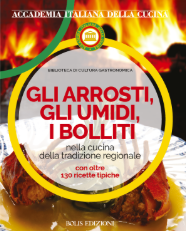 The fragrances of cooking meat – roasted, stewed or boiled with garden vegetables – bring back the flavours of home. And even merely leafing through this book reminds us of them all, alongside those evoked by images of succulent preparations and simple, authentic ingredients transformed into unforgettable dishes. Indeed, regional cuisine also lives through its flavours, and many preparations, even those whose regional origins make them less known, involve barnyard animals, grazing livestock, hogs or cattle from mountain pastures. Over 130 recipes delve into family histories, holidays and everyday life by uncovering facts, places and curiosities: to the reader the pleasure of sharing them.
The fragrances of cooking meat – roasted, stewed or boiled with garden vegetables – bring back the flavours of home. And even merely leafing through this book reminds us of them all, alongside those evoked by images of succulent preparations and simple, authentic ingredients transformed into unforgettable dishes. Indeed, regional cuisine also lives through its flavours, and many preparations, even those whose regional origins make them less known, involve barnyard animals, grazing livestock, hogs or cattle from mountain pastures. Over 130 recipes delve into family histories, holidays and everyday life by uncovering facts, places and curiosities: to the reader the pleasure of sharing them.
Beans, chickpeas and other legumes (peas, green beans, fava beans and lentils) in regional culinary traditions

In the past, legumes were not only very common but also necessary, as they ensured protein intake for rural populations often deprived of meat. Numerous regional recipes include legumes as precious ingredients to add flavour and consistency to soups, condiments, main courses and even desserts. The volume presents 150, selected from among the most iconic and delicious, without overlooking some recipes revisited by modern restaurant culture. Nowadays, projects to rescue local varieties have reinstated species that seemed lost, whose flavour is assuredly different from that of imported or industrially processed variants. Readers are offered the pleasure of learning about the variegated world of legumes in many of its fascinating nuances.
Rice, maize and other grains (wheat, farro, barley, oats and rye) in regional culinary traditions
Cereals, or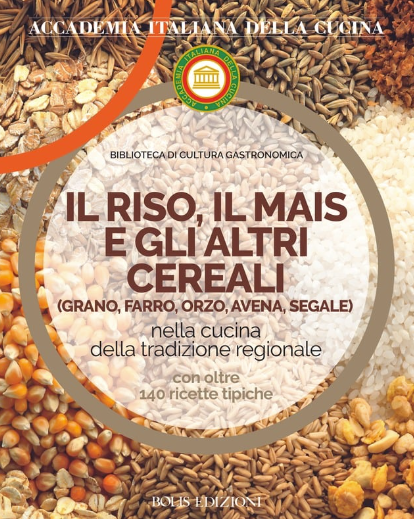 grains, are fundamental to Italy’s regional cuisine, and this volume examines their history, current uses and vulnerable moments. Rice is experiencing one now, as its cultivation is jeopardised by climate change. Instead, other crops that had been increasingly abandoned, such as farro, rye, barley and maize, are being re-evaluated in search of new flavours with an ancient touch. Many recipes in this volume are dedicated to the various methods of using cereals, from which identity-defining dishes have been created since time immemorial. Such is the case with wheat flours, so indispensable for making the manifold traditional breads and the multitude of pasta shapes enriching our tables. The volume thus invites readers into a world rooted in the past that finds relevance to current issues and is geared towards the future.
grains, are fundamental to Italy’s regional cuisine, and this volume examines their history, current uses and vulnerable moments. Rice is experiencing one now, as its cultivation is jeopardised by climate change. Instead, other crops that had been increasingly abandoned, such as farro, rye, barley and maize, are being re-evaluated in search of new flavours with an ancient touch. Many recipes in this volume are dedicated to the various methods of using cereals, from which identity-defining dishes have been created since time immemorial. Such is the case with wheat flours, so indispensable for making the manifold traditional breads and the multitude of pasta shapes enriching our tables. The volume thus invites readers into a world rooted in the past that finds relevance to current issues and is geared towards the future.
The farmer's table: field, stable and courtyard in regional culinary traditions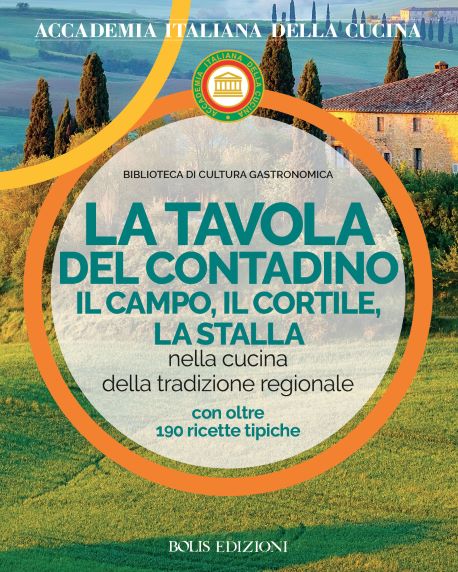 Peasant cuisine was born poor but is brimming with inventiveness, as demonstrated by the over 190 recipes in the 9th volume of our book series. Not only recipes, however, since the history of rural society during any era is a combination of cultures, traditions and knowledge. A fragrant world of wild herbs, broths and soups, vegetables and legumes grown in fields or the patch behind the farm testifies to a wide array of still common, but often forgotten, ancestral preparations. An immensely fascinating world both ancient and modern, into which this volume delves at the regional level, recounting rural traditions which are reawakening a certain yearning for our culinary roots.
Peasant cuisine was born poor but is brimming with inventiveness, as demonstrated by the over 190 recipes in the 9th volume of our book series. Not only recipes, however, since the history of rural society during any era is a combination of cultures, traditions and knowledge. A fragrant world of wild herbs, broths and soups, vegetables and legumes grown in fields or the patch behind the farm testifies to a wide array of still common, but often forgotten, ancestral preparations. An immensely fascinating world both ancient and modern, into which this volume delves at the regional level, recounting rural traditions which are reawakening a certain yearning for our culinary roots.
Forest and Undergrowth: chestnuts, mushrooms, truffles and woodland fruits in regional culinary tradition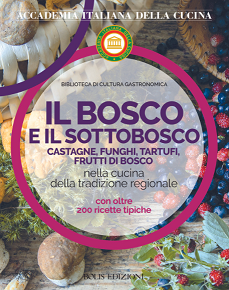 The eighth volume of the Food Culture Library, published by Bolis and resulting from the Regional Study Centres’ invaluable efforts, is dedicated to edible plants and fungi of the forest and undergrowth. It contains over 200 regional recipes and discusses products and flavours as well as the history, legends and other intriguing facts connected to them.
The eighth volume of the Food Culture Library, published by Bolis and resulting from the Regional Study Centres’ invaluable efforts, is dedicated to edible plants and fungi of the forest and undergrowth. It contains over 200 regional recipes and discusses products and flavours as well as the history, legends and other intriguing facts connected to them.
Fries, fritters and frittata in regional culinary tradition
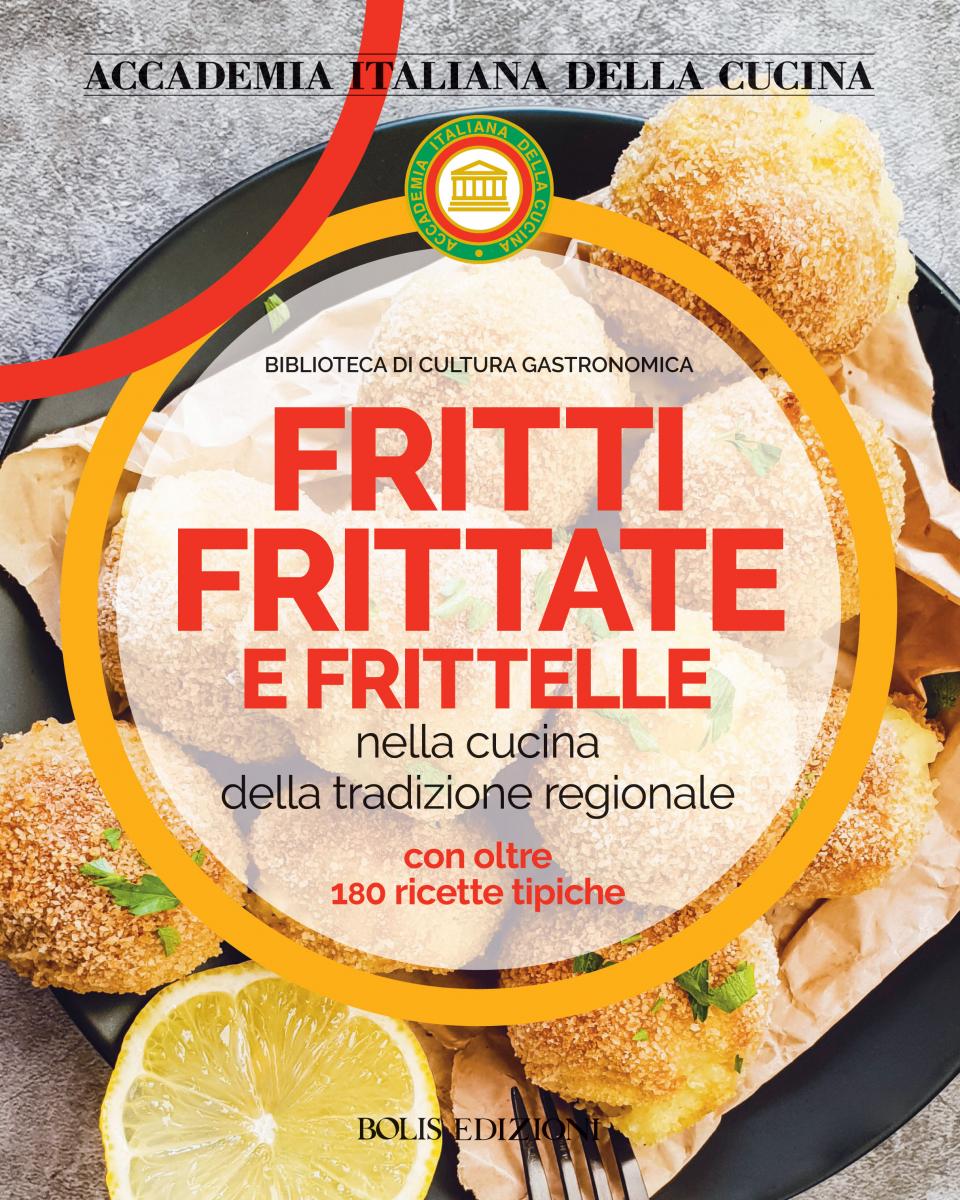 "Fries, fritters and frittata in regional culinary tradition". This is the topic of the seventh volume of the Food Culture Library and of the presentations and menu during the ecumenical dinner, which will unite all Academicians, in Italy and abroad, around the same virtual table on 15 October 2020.
"Fries, fritters and frittata in regional culinary tradition". This is the topic of the seventh volume of the Food Culture Library and of the presentations and menu during the ecumenical dinner, which will unite all Academicians, in Italy and abroad, around the same virtual table on 15 October 2020.
Fresh and stuffed pasta and gnocchi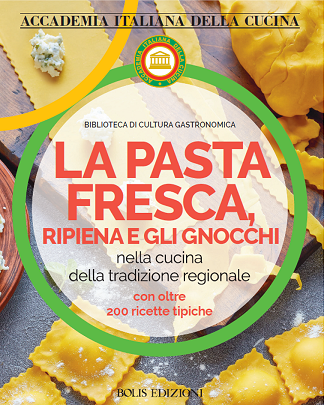 The sixth volume of the Food Culture Library traces the history, culture and processes leading to the innumerable recipes created by kneading hands: fettuccine, lasagne, trofie, bigoli, maltagliati, pici, cavatelli, and orecchiette – to name but a few. Ingenuity and local produce have further enriched various pasta doughs with fillings, sweet or savoury, with or without meat, in a cornucopia of flavours. Gnocchi, furthermore, form a large family, encompassing not only potato gnocchi but those made of pumpkin, semolina, bread... A delicious journey to rediscover the manifold traditional forms of an emblematic Italian food – pasta – for which we are envied worldwide.
The sixth volume of the Food Culture Library traces the history, culture and processes leading to the innumerable recipes created by kneading hands: fettuccine, lasagne, trofie, bigoli, maltagliati, pici, cavatelli, and orecchiette – to name but a few. Ingenuity and local produce have further enriched various pasta doughs with fillings, sweet or savoury, with or without meat, in a cornucopia of flavours. Gnocchi, furthermore, form a large family, encompassing not only potato gnocchi but those made of pumpkin, semolina, bread... A delicious journey to rediscover the manifold traditional forms of an emblematic Italian food – pasta – for which we are envied worldwide.
Sweet and Savoury Cakes and Pies in Traditional Regional Cuisine
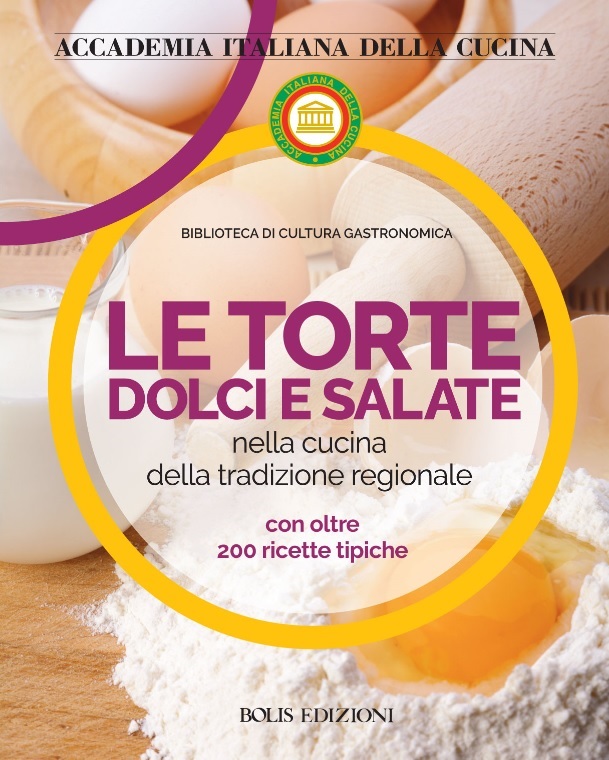 'Cake’ is a magic word, immediately reminiscent of sweet aromas and festive celebrations. However, the Italian term torta, encompassing a wider array of baked goods, is also a savoury dough shell which can contain vegetables, cheese or meat. This fifth volume of the Food Culture Library traverses Italy in search of recipes which still represent a rich and valuable tradition. There are many savoury pie fillings which use the finest local ingredients, but those in sweet pies are in no way inferior: inimitable specialities from the Neapolitan pastiera to the parrozzo from the Abruzzi to the Sicilian cassata. A cornucopia of fruit – blueberries, oranges, chestnuts, limoncella apples, almonds, hazelnuts – decorates or forms the bulk of celebratory sweets.
'Cake’ is a magic word, immediately reminiscent of sweet aromas and festive celebrations. However, the Italian term torta, encompassing a wider array of baked goods, is also a savoury dough shell which can contain vegetables, cheese or meat. This fifth volume of the Food Culture Library traverses Italy in search of recipes which still represent a rich and valuable tradition. There are many savoury pie fillings which use the finest local ingredients, but those in sweet pies are in no way inferior: inimitable specialities from the Neapolitan pastiera to the parrozzo from the Abruzzi to the Sicilian cassata. A cornucopia of fruit – blueberries, oranges, chestnuts, limoncella apples, almonds, hazelnuts – decorates or forms the bulk of celebratory sweets.
Flavours of the vegetable garden in traditional regional cuisine
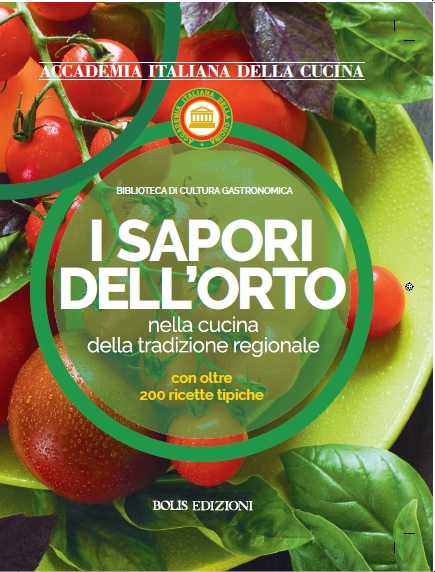
The home vegetable garden has, especially in the past, constituted an important source of ingredients for preparing dishes associated with specific areas. This volume traverses
The use of cheeses in traditional regional cuisine
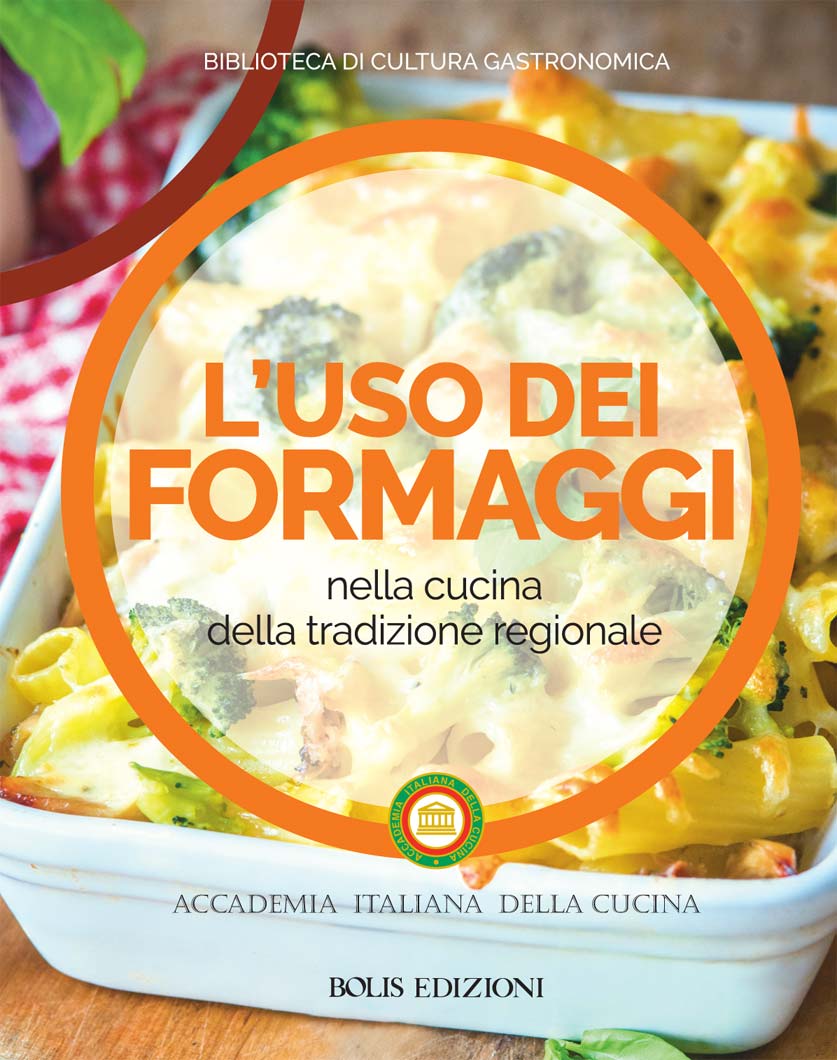
Cheese is a ‘living’ product, changing over time and according to season and environment. It is never identical, but is to be rediscovered each time. The Italian art of cheese-making has produced and continues to produce hundreds of cheeses which are strongly associated with their places of origin. They can be enjoyed as is, or used in a wide variety of recipes, as demonstrated by the breadth covered by this volume. Today, considering the abundance of industrial products available, consumers must be ever more aware of the peculiarities of, and the differences between, artisanal cheeses. For these reasons, the
Sea and freshwater fish in traditional regional cuisine
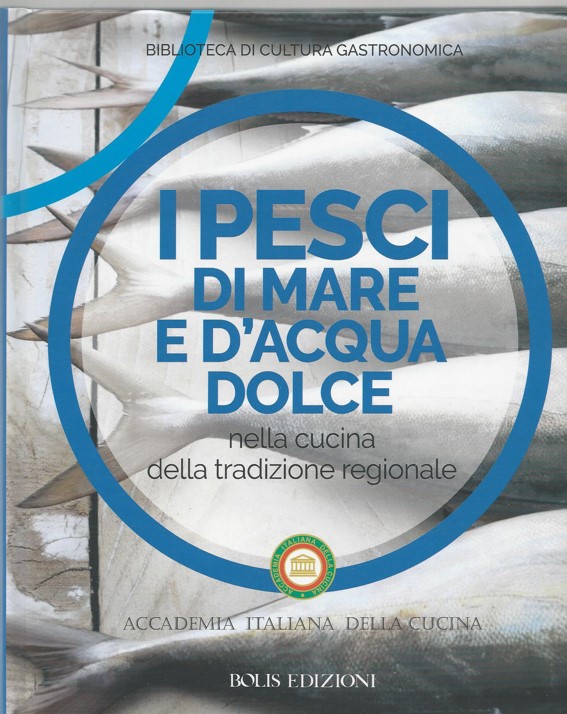
Sauces and Gravies in Regional Cooking Tradition
![]()
Seventy recipes illustrate the colours and flavours of the various Italian regions, from North to South: this is a veritable regional mosaic through which we may rediscover the natural environment, history, traditions and customs, and linguistic traits of a community.
